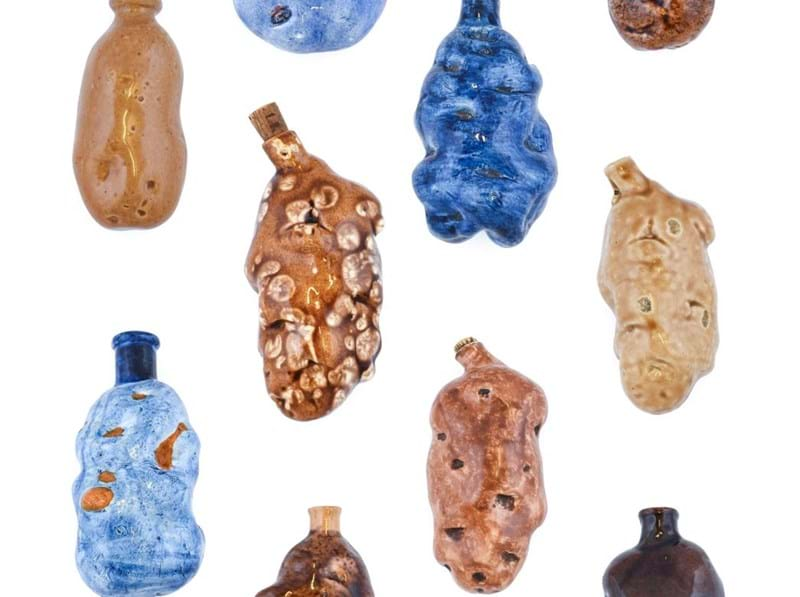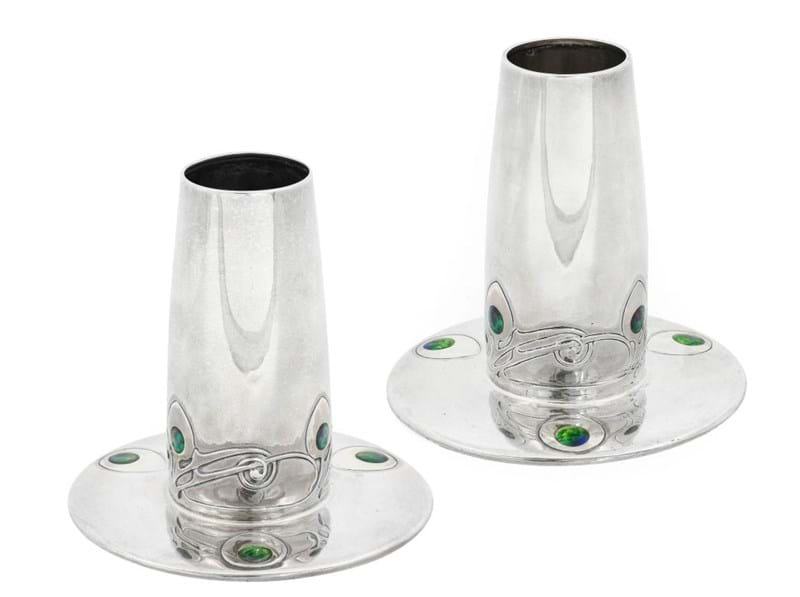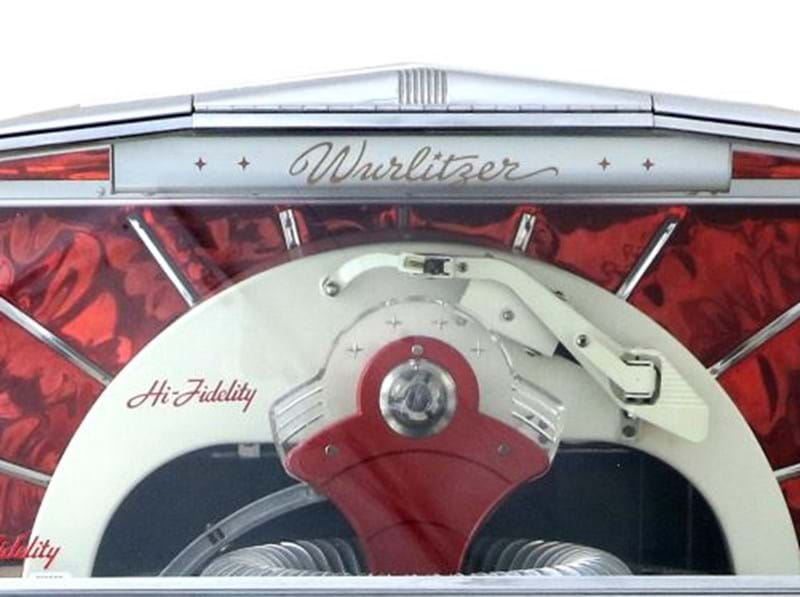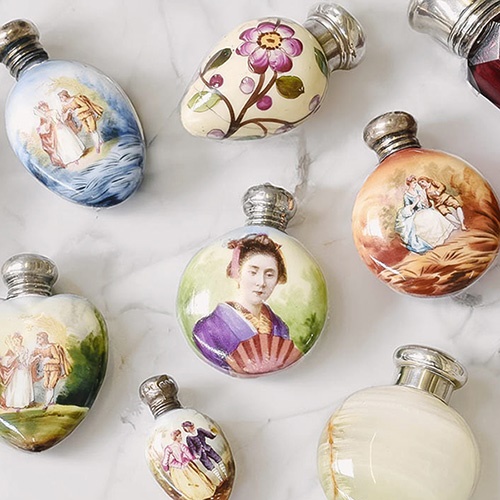Silver from the legendary ‘Sale of the Century’ of the Rothschild collections at Mentmore in 1977, will be sold in the Fine Jewellery, Watches and Silver Sale at Tennants Auctioneers on 13th July.
Mentmore Towers, usually referred to simply by the mononym ‘Mentmore’, is the grand 19th century country house built for the Rothschild banking family in Buckinghamshire in the 1850s. The house was designed by Sir Joseph Paxton in the so-called ‘Jacobethan’ style, commissioned by Baron Mayer de Rothschild, a celebrated collector, as both a country home and a gallery for his famous collection of fine and decorative art.
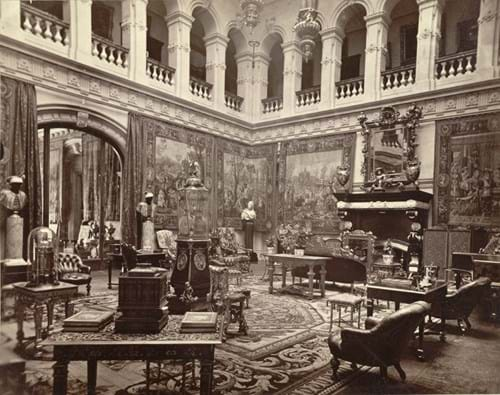
The Great Hall at Mentmore
As quoted by James Sheahan in his History and Topography of Buckinghamshire, 1862, Mentmore was described by a visitor as:
“This Palatial Residence of Baron de Rothschild introduced a new style of domestic architecture into Buckinghamshire… The mansion is built entirely of Ancestor stone, of fine quality and colour; the cornices are highly enriched; and the frieze of each order filled in with carved panels and heads… The Great Hall is about 48 feet by 40 feet, and 40 feet high, and is separated from the Sub Hall by the corridor... In the Sub Hall leading to the Great Hall is a collection of beautiful Italian statuary, bronzes, and pillars of the rarest ancient marbles. Amongst the most remarkable of these objects is a Greek statue of a Bacchante, with porphyry drapery and a beautiful bronze bust of Greek workmanship. The Great Hall contains an infinity of interesting works of art. From the ceiling are suspended the three Lanterns of copper gilt, surmounted by the Lion of St. Mark, which were made in the arsenal of Venice in the time of the Doge Andrea Vendramin, in 1470, and once illuminated the deck of the famous Bucintoro. The walls are covered with twelve large well preserved and interesting panels of tapestry, the subjects representing the occupations and amusements of each month of the year. The large chimney-piece, sculptured in black and white marble, was designed by and executed for Rubens, and formerly decorated his house at Antwerp. There are four busts of Moors of cinque-cento workmanship in basalt, the draperies composed of Rosso antique and other rare marbles. Also large sculptured Florentine tables of the 16th century, with magnificent antique marble slabs; and two prizes in silver with inscriptions, which were presented by King William III. to the City of Berne… On the upper floor is a Boudoir, full of the most beautiful drawings, paintings, miniatures, old Sevres porcelain, and Bijoux of the time of the three Louis's, viz. XIX, XV, and XVI.”
The Baron and Baroness de Rothschild spent over twenty years living in the house surrounded by their celebrated collections until their deaths in 1874 and 1877 respectively. The couple had only one child, and so Hannah de Rothschild was to become the richest woman in Britain as her father’s sole heiress, inheriting the house, estates, and art collection. Hannah went on to marry, Archibald Philip Primrose, 5th Earl of Rosebery and 1st Earl of Midlothian in 1878, becoming Hannah Primrose, Countess of Rosebery.

Archibald Primrose, the 5th Earl of Rosebery
The estates thus passed into the family of the Earls of Rosebery, first to Hannah’s son Albert Edward, 6th Earl, and then to her grandson Neil, 7th Earl. The family seat of the Earls of Rosebery was traditionally Dalmeny House in West Lothian and so by the 1940s the Mentmore estates had become somewhat redundant and costly to maintain. For this reason, much of the land was sold in 1944, though the house and village were retained by the family. This state of affairs was to continue until 1974 when, on the death of the 6th Earl, the executors began to explore possibilities for the sale of the house and its contents, with the hope it could be sold to the Nation to be preserved as a heritage property.
It was initially the intention that the contents could be negotiated for sale to the nation in lieu of inheritance tax, but this was refused by the then Labour Prime Minister James Callaghan. Later the possible sale of the house and contents to the nation for £2 million was suggested but this too was refused and so, after several years of discussion, Sotheby’s were instructed by the executors to present the collection for auction in May 1977 in what was to be described as ‘The Sale of the Century’. The sale ran for ten days, selling everything from the paintings on the walls, the furniture in the grand salons and the silver in the strongroom to the kitchen wares and furniture from the servant's quarters. The silver was offered over several sessions, with the most expensive items offered as part of Volume Two of the catalogue, with the foreign silver offered on 19th May as lots 601-694 and the English silver on 23rd May as lot 1601-1720. Later in the sale, further foreign and English silver was offered in Volume Five of the catalogue as lots 3401-3739, which gives an idea of how extensive the sale was. The entire collection sold for more than £6,000,000.
Among the silver included in the first part of the sale was a pair of Augsburg silver figures, one depicting the Venus de Medici, copied from an example in the Vatican Museums, and the other the Belvedere Antinous, copied from an example now in the Uffizi Gallery, Florence. Offered in the Mentmore Sale as lot 694, the figures subsequently reappeared on the market in 2010, selling for over £450,000. However, along with such exceptional works of art in the sale was a wonderful selection of more affordable items.

A Graduated Pair of George IV Silver Teapots, Maker's Mark IB, Perhaps for John Baddeley, London, 1820 (Estimate: £700-1,000 plus buyer’s premium)
On offer at Tennants this Summer are a number of items that were purchased by the current owner at the sale in 1977. These include a remarkable and unusual pair of George IV Silver Teapots that were offered as lot 1687 and are illustrated in the Mentmore catalogue. The teapots are unengraved and so are perhaps part of the original Rothschild collection for which Mentmore was built. They have the maker’s mark ‘IB’, which is probably that used by the silversmith John Baddeley of whom very little is known except that he entered his first mark in October of 1818, two years before the creation of the Mentmore teapots, and was working at 27 Seward Street, London. Unusual among teapots of the period these examples are robustly chased with fruiting vines and raised on shell-cast feet.

A French Silver Bowl, Marked Only with Fineness Mark, Paris, 1819-1838 (Estimate: £400-600 plus buyer’s premium)
Another example which is likely a Rothschild heirloom is a French silver bowl, offered as lot 673 in the original sale. Perhaps originally intended to be used as a basin with an ewer, the bowl measures almost 30cm in diameter and is marked with the French fineness mark that was used between 1819 and 1838.

A Pair of Edward VII Silver Inkwells, by Sebastian Garrard, London, 1904, Retailed by R. & S. Garrard & Co., Haymarket, London (Estimate: £400-600 plus buyer's premium)

An Edward VII Silver Hot-Water Jug, by Charles Stuart Harris, London, 1901 (Estimate: £300-500 plus buyer's premium)
The final two items among this fascinating group of silver are two items that were made for Hannah de Rothschild’s husband, Archibald Philip Primrose, 5th Earl of Rosebery and 1st Earl Midlothian (1847-1929). They are both engraved with his initials ‘AR’ within the garter motto, reflecting his position as a Knight of the Garter, and below an earl’s coronet. The first is a pair of inkwells made by Sebastian Garrard and retailed at the R. & S. Garrard showroom on Haymarket, London. The second is a hot water jug made by Charles Stuart Harris in London in 1901.
View Sale Details









